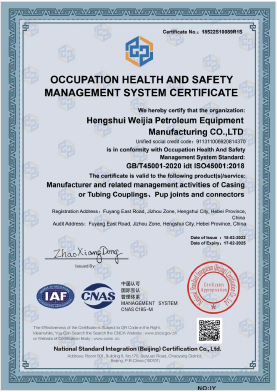- Afrikaans
- Albanian
- Amharic
- Arabic
- Armenian
- Azerbaijani
- Basque
- Belarusian
- Bengali
- Bosnian
- Bulgarian
- Catalan
- Cebuano
- Corsican
- Croatian
- Czech
- Danish
- Dutch
- English
- Esperanto
- Estonian
- Finnish
- French
- Frisian
- Galician
- Georgian
- German
- Greek
- Gujarati
- Haitian Creole
- hausa
- hawaiian
- Hebrew
- Hindi
- Miao
- Hungarian
- Icelandic
- igbo
- Indonesian
- irish
- Italian
- Japanese
- Javanese
- Kannada
- kazakh
- Khmer
- Rwandese
- Korean
- Kurdish
- Kyrgyz
- Lao
- Latin
- Latvian
- Lithuanian
- Luxembourgish
- Macedonian
- Malgashi
- Malay
- Malayalam
- Maltese
- Maori
- Marathi
- Mongolian
- Myanmar
- Nepali
- Norwegian
- Norwegian
- Occitan
- Pashto
- Persian
- Polish
- Portuguese
- Punjabi
- Romanian
- Russian
- Samoan
- Scottish Gaelic
- Serbian
- Sesotho
- Shona
- Sindhi
- Sinhala
- Slovak
- Slovenian
- Somali
- Spanish
- Sundanese
- Swahili
- Swedish
- Tagalog
- Tajik
- Tamil
- Tatar
- Telugu
- Thai
- Turkish
- Turkmen
- Ukrainian
- Urdu
- Uighur
- Uzbek
- Vietnamese
- Welsh
- Bantu
- Yiddish
- Yoruba
- Zulu
casing coupling dimensions
Casing Coupling Dimensions An Overview
In the oil and gas industry, effective well construction is paramount to success, and casing coupling dimensions play a critical role in ensuring the integrity of well completions. Casing refers to the series of steel pipes that are installed in a wellbore to provide structural support, prevent the collapse of the borehole, and protect groundwater from contamination. Couplings, on the other hand, are short pipe sections used to connect two lengths of casing together. Understanding their dimensions and specifications is essential for maintaining a reliable and safe drilling operation.
Importance of Casing and Coupling Dimensions
The dimensions of casing and couplings significantly influence their mechanical properties, including strength, stiffness, and pressure tolerance. The casing must be correctly sized to match the geological conditions it encounters, and couplings must facilitate connections that can withstand the mechanical loads incurred during drilling and production.
Casing dimensions typically include the outer diameter (OD), wall thickness, length, and grade. The outer diameter is particularly crucial, as it needs to match the wellbore size. Standard casing sizes range from 4.5 inches to over 20 inches, while wall thickness can vary depending on the casing's intended use and the pressures it will encounter.
Coupling Specifications
Couplings are often categorized by their type and tapering design. The common types of couplings include flush joint, regular joint, and semi-flush joint, each with varying dimensions designed for specific applications. Regular couplings have a different size than the casing, providing an external shoulder that facilitates connection. Conversely, flush and semi-flush couplings offer profiles that align closely with the casing’s diameter, reducing the likelihood of damage during drilling.
casing coupling dimensions

The length of couplings also varies, but they are generally manufactured to be shorter than standard casing lengths. This is to ensure ease of handling and minimize the potential for mishaps during installation.
Standardization and Industry Practices
Casing and coupling dimensions are often standardized by various organizations, including the American Petroleum Institute (API). These standards provide clarity on the appropriate dimensions that must be met in order to achieve a reliable and safe installation. API specifications cover material properties, thread types, and dimension tolerances, ensuring that manufacturers produce components that fit and function properly.
Even within standardized dimensions, variations can occur based on the specific requirements of a project or geographic location. Drilling engineers must take these variations into account during the planning stages, as compatibility between casing and coupling dimensions can affect the overall efficiency of the drilling process and subsequently, production rates.
Conclusion
In conclusion, casing coupling dimensions are a vital component of well construction in the oil and gas industry. Proper sizing and specifications ensure the integrity and reliability of the well throughout its lifecycle. As technology and industry practices evolve, continual assessment of casing and coupling dimensions must be undertaken to accommodate new challenges and enhance drilling operations. Ensuring compliance with standards and adapting to new technologies will play a key role in optimizing well performance and ensuring the sustainability of resources in the ever-competitive energy sector.
-
Tubing coupling plays a significant role in the chemical industryNewsApr.03,2025
-
The Importance of Tubing Crossover in Various Industrial FieldsNewsApr.03,2025
-
The characteristics and important role of Tubing Pup JointNewsApr.03,2025
-
Characteristics and functions of Pup jointNewsApr.03,2025
-
Characteristics and Functions of Pup Joint PipeNewsApr.03,2025
-
Application of Coupling Casing in Various ScenariosNewsApr.03,2025







